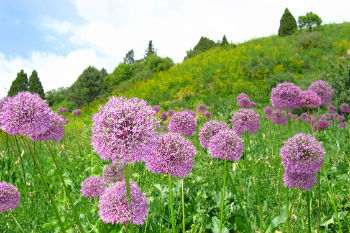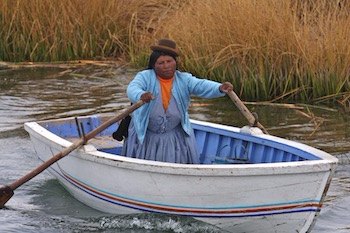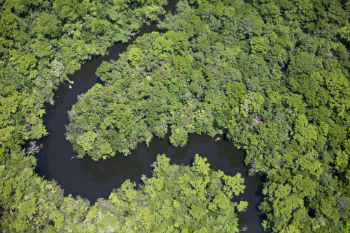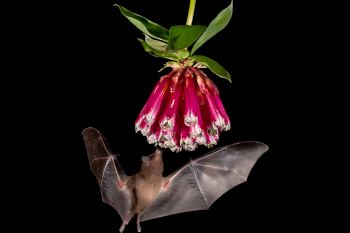Main menu
CEPF is a joint initiative of l’Agence Française de Développement, Conservation International, the European Union, Fondation Hans Wilsdorf, the Global Environment Facility, the Government of Canada, the Government of Japan and the World Bank. A fundamental goal is to ensure civil society is engaged in biodiversity conservation.
Visitez le site français コア情報の日本語翻訳を読むOr use Google Translate to translate the English site to your language:
GTranslate
Reinvigorating An Arid Region’s Wetlands in Central Asia
Tajikistan organization implements plan for restoration and sustainable management of valuable wetland habitat
15 January 2025
15 January 2025
This story was originally published in the 2023 CEPF Impact Report.
Like many waterways, the Sry Darya River doesn’t have much regard for borders. Including its headwaters, the river flows from the Tian Shan mountains in Kyrgyzstan into Uzbekistan, briefly through Tajikistan, back into Uzbekistan, into Kazakhstan, and ultimately toward the now almost disappeared Aral Sea.
As it crosses the border from Uzbekistan to Tajikistan, the river flows westward through a natural wetland and delta floodplain before collecting in the Kayrakkum Reservoir. The reservoir is a crucial source of fish and livelihoods for people in the adjacent Khujand, Tajikistan’s second largest city. The flow of the river itself is similarly critical for Tajikistan to meet its water supply commitments to downstream neighbors. And the key to both the river’s flow and the services provided by the reservoir: the wetland.
This area represents one of the last remaining spots along the Syr Darya River that supports arid-climate tugay forest ecosystems, which rely on floods and ground water rather than rainfall. The wetland filters water, prevents land erosion and stores carbon. It is a wintering site for migratory waterfowl, a spawning spot for the fish of the river and reservoir, and is home to several rare and endangered local endemic species, including the pike asp fish (Aspiolucius esocinus), which is listed as Vulnerable on the IUCN Red List of Endangered Species.
However, this valuable habitat has been shrinking. Climate change, siltation of river channels, livestock overgrazing, poaching and illegal fishing with electric equipment are just some of the factors undermining the ecosystem.
Tajikistan organization Youth Group on Protection of Environment (YGPE) recognized the peril posed by the multitude of threats to the wetlands, and in response, conducted a comprehensive environmental assessment. Based on scientific data and consultations with local stakeholders, YGPE developed and began implementation of a plan for restoration and sustainable management.
Restoring and Monitoring the Habitat
YGPE restored more than 8 kilometers of riparian channels reconnecting the central lake with the river and aiding the survival of fish spawn during the summertime’s low water levels. The result: an estimated 5 million fish fingerlings saved annually.
The project team established a plant nursery to support reforestation. About 20,000 trees were planted in the nursery and around the wetlands, improving the feed base for local fauna. And local stakeholders received tools to ensure proper monitoring of the area, aided by a pilot video surveillance system.
Raising Awareness
Restoration efforts would be pointless without local communities,” said Mamadov Ikromjon, director of YGPE. The project engaged with communities through multiple activities, including:
- A youth nature festival involving more than 300 schoolchildren from nearby villages.
- Multiple community meetings, consultancies and roundtables.
- Excursion and eco-activities with university students.
- A two-day birdwatching workshop.
- An online awareness campaign through social media, local TV channels and networking that reached about 1 million online users.
“The community activities have laid a firm basis for restoration of this critically important site, and YGPE will keep working to protect and restore the wetlands in collaboration with local and international partners,” said Khurshed Alimov, community mobilizer for the project. Based on the results of the scientific research, YGPE has initiated the process of obtaining status of a natural protected area for the wetlands. The initial documents have been prepared and filed with the Department of Environmental Protection and the Chairman of the Sughd Region of Tajikistan. YGPE expects the process to be completed in 2025.






